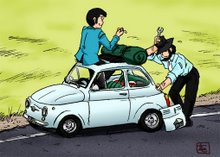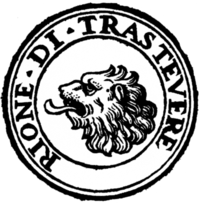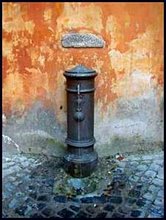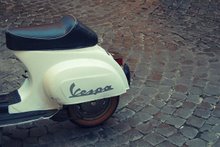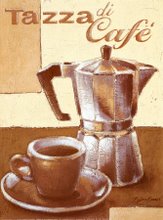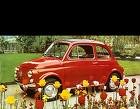Many posts ago we talk about the meaning of "Domus" & "Insula" as a typical roman building and as the names for the
A Night in Rome apartments, today we're going to talk about.... "Villa", yes because we're going to have another apartment and this is its name!!
Now we have 3 little "babies" to make your holiday an unforgettable esperience! ;-)

The ancient building called "
Villa" was built in Rome in the III century B.C. and originally it was the country house of the roman highest social classes. The richest romans, who lived in the Domus when they were in Rome, in their country possessions could have one or both these kinds of buildings: the "
Villa Rustica" or the "
Villa Urbana".
The first one (
Villa Rustica ) was a real country farm while the second (
Villa Urbana), which rose near the city, was similar to the Domus building but much more sumptuous. It was used to give romans a quite and relaxing stay near the city.

The Villa rose with a great number of galleries supported by long rows of columns which guaranteed to romans long walks by feet ,in litter, or by horse on bad weather days.
It was equipped with "triclini" for the summertime in a wide open space, and "triclini" for the winter season, in a closet one, rooms for the diurnal rest (the so called "
cubicula"), studium rooms, swimming pool to swim (the so called "
piscina natatoria") and a bathroom supplied by calidarium, tepidarium and frigidarium as the large public terme. All the building was surrounded by a land, partially cultivated as a hortus and partially adorned with flowers, fountain games, plants and statues as a garden.
 A Nihgt in Rome Villa
A Nihgt in Rome Villa is our small pearl in the center of Rome Testaccio, certainly it has not private gardens with water games and statues but anyway it has its public gardens adorned by plants, threes and games for the babies! ;-)
It also does not have either tiepidarium calidarium or frigidarium or the private swimming pool but is a really wide and bright apartment with two balcony from which you can see the dawn and the sunset, in one of the most beautiful “
quartieri de roma” !! Do you want to see the typical and popular roman neighbourhood?! Try Testaccio.....what your ears are going to hear is not the spoken italian but the authentic spoken romanesco!!
We hope to have you as our guests soon!!!
Try the original "romanesco" taste, stay with us!
 Yesterday Rome from Alinari
Yesterday Rome from Alinari






















